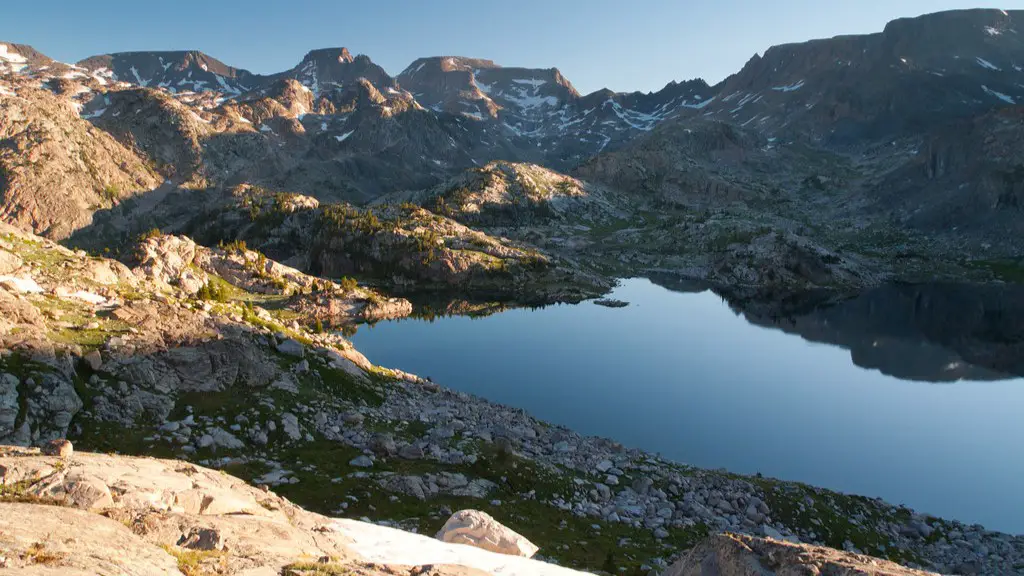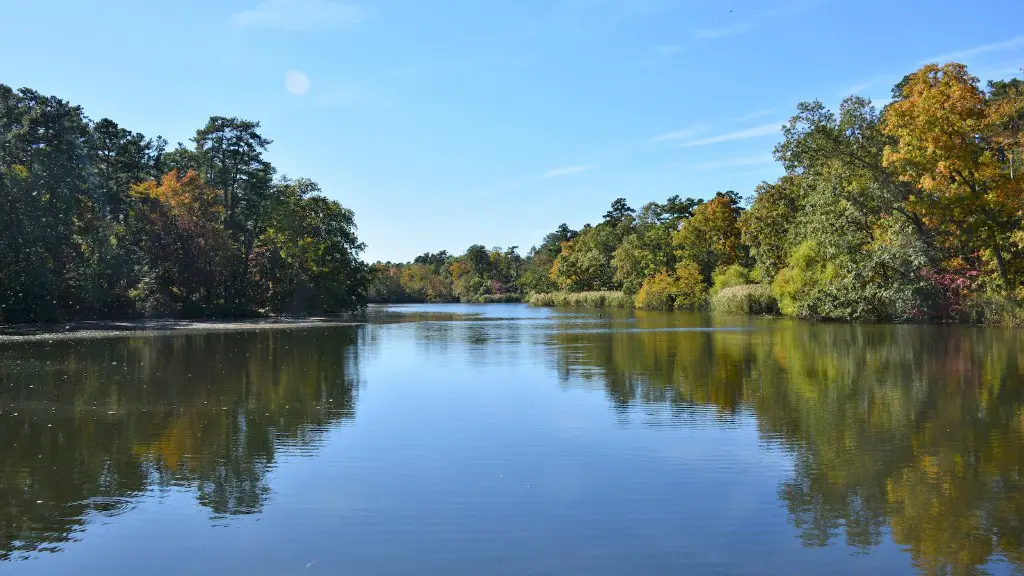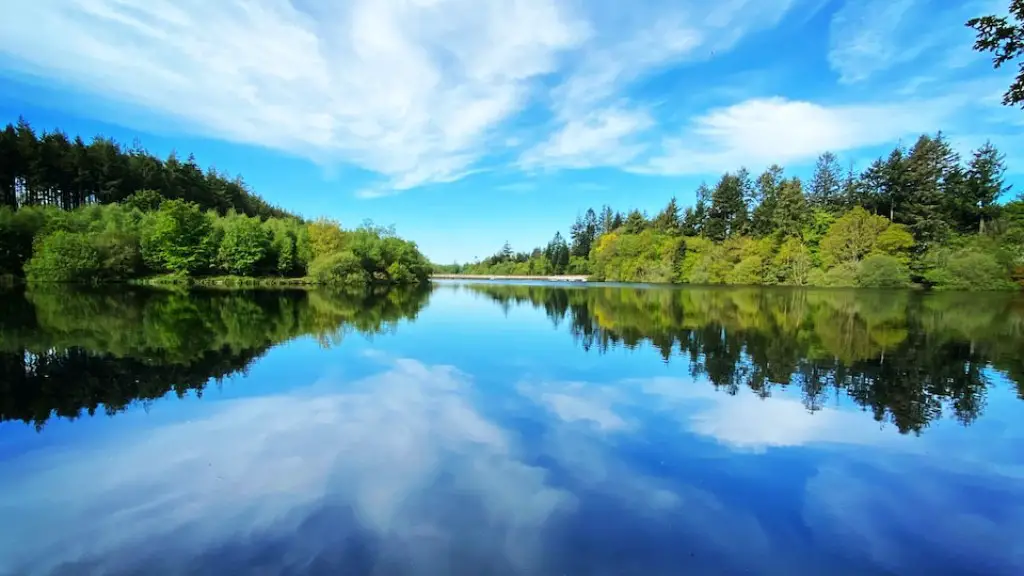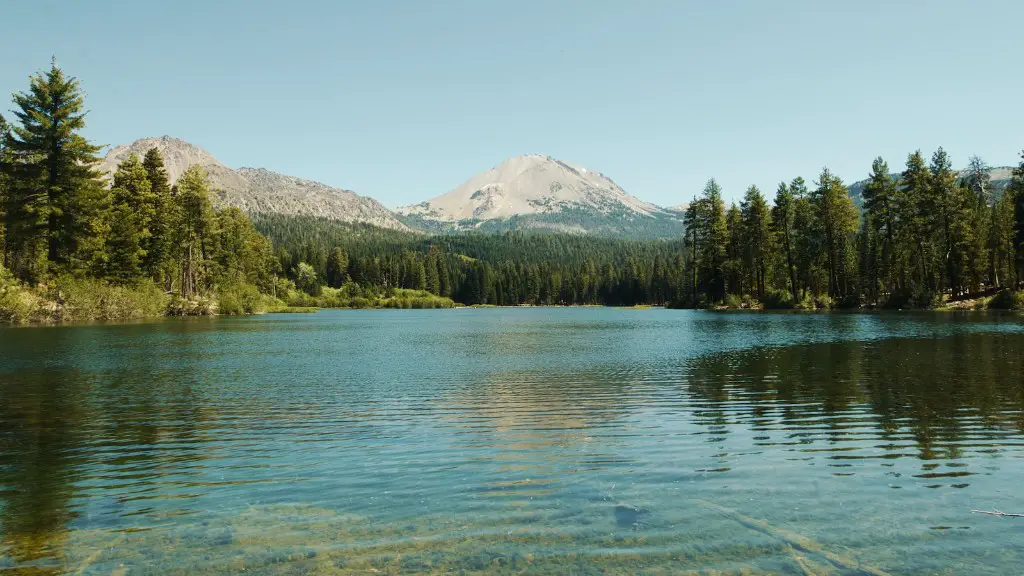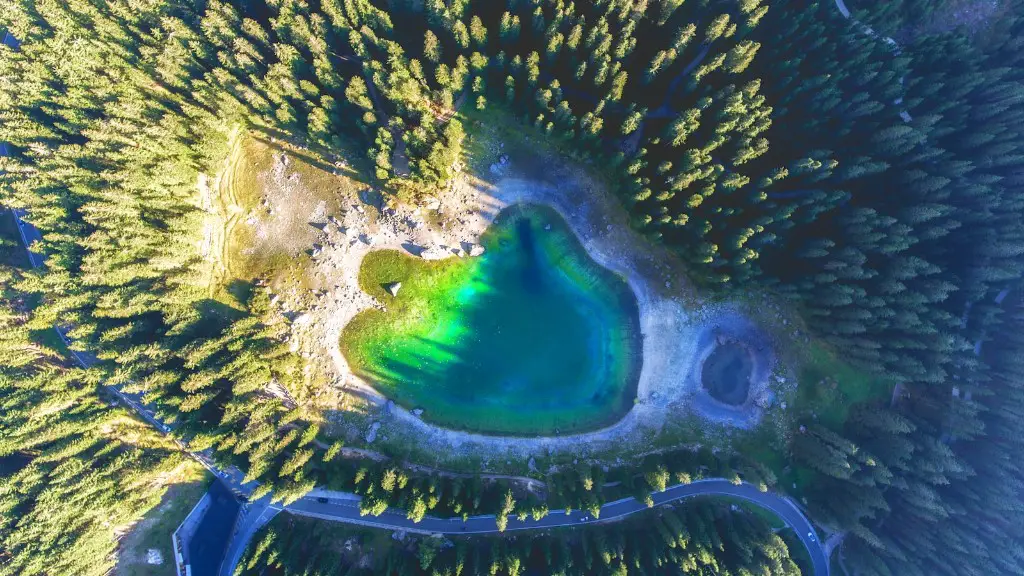Frozen lakes are a common sight during the winter months and it is easy to think that all lakes experience this phenomenon.However, one of the most unique lakes in the world is Lake Superior, the largest and deepest of the Great Lakes located between US and Canada.According to scientists, the answer is not as simple as yes or no as to whether or not this lake ever completely freezes over.
Lake Superior got its name from the indigenous people of North America who thought it was too big for any being to imagine.Its humid continental climate and vastness means that its surface temperature does not drop as low as other smaller lakes.Thus, it can be difficult to predict whether or not it will freeze over in any given winter.The lake’s average surface temperature is between 35 and 39 degrees Fahrenheit, however in recent years there has been an increase in winter temperature, making it less likely to freeze over.
Scientists have also studied the lake’s circulation patterns and water composition, finding that its surface waters are kept in movement by winds that create near-continuous waves.This can lead to the formation of ice along the shoreline, but much less freezing of the lake surface than what is experienced in other lakes.
The US National Oceanic and Atmospheric Administration (NOAA) has reported on the unique characteristics of Lake Superior, noting that the lake is capable of creating extremely cold temperatures in winter, however it is not likely to completely freeze over.Whilst Lake Superior can experience extreme cold temperatures, the lake has still not experienced a complete solid freeze in the same way that smaller, shallower lakes do.
Experts have suggested that the wind interference and pycnocline, a vertical layer of water of different density, play a role in creating turbulent winds and restricting the spread of cold air.Whilst it is possible for there to be ice along the shoreline, the lake generally remains free of thick layers of ice.
The characteristics of Lake Superior provide scientists with an invaluable insight into climate change.The lake’s ability to retain so much heat, even in very cold temperatures, is an indication that weather and climate changes are already happening.It is a phenomenon that many experts are eager to know more about.
Lake Superior has an interesting relationship with its neighbouring lakes, many of which experience a complete freeze.The challenge of why Lake Superior does not completely freeze has been compared to a scientific puzzle, and researchers are continuing to study the lake in order to answer the question.
Variations in Climate
Scientists have studied the relationship between climate and the behaviour of Lake Superior in more detail,year-round and seasonally.The lake’s temperature variations, changes in precipitation and atmospheric pressure are all considered when predicting whether or not the lake will freeze.Whilst there is evidence to suggest that the lake has seen freezing in the past, there is no guarantee that the lake will remain frozen in future winters.
Sub-Atlantic Midwest air and prevailing westerly winds play a role in keeping Lake Superior from freezing.The lake’s surface is always exposed to warm air and therefore does not always get cold enough for ice to form.The lake also does not freeze because of the salt content in its waters, which is higher than many other large lakes.Salty water does not freeze as quickly as fresh water does and therefore,Lake Superior does have the capacity to remain unfrozen in the winter.
The high levels of humidity in the air, as well as the shallow nature of parts of the lake, can prevent the lake from freezing over, even when the surface temperature is below zero.It has been suggested that these factors also contribute to the prevention of outright freezing.
Scientists have noted that water temperature data collected from the lake’s depths can help to highlight the extent to which the region is affected by climate change.The data shows that there has been an increase in temperatures at Lake Superior’s deepest points, indicating that climate change is impacting the region.
The data shows that more of the lake’s surface area is exposed to warmer conditions, meaning that it is less likely for the lake to freeze in some winters.This is a concerning indication as to what further impacts climate change could have on Lake Superior in future winter months.
Expert Perspectives
Scientists from the University of Minnesota have observed the lake over recent decades and have come to a conclusion that the lake only partially freezes over at the most.Whilst Lake Superior can become very cold, experts suggest that its sheer size and depth paired with the temperature variations mean that it is improbable for the lake to ever completely freeze over in the same way that many other inland water bodies do.
Researchers at NOAA state that Lake Superior continues to be of great research interest.Whilst there are many studies that examine the lake’s behaviour and seasonal patterns, they acknowledge that there is still much to learn about how it is affected by its climate and the surrounding environment.
The lake’s impressive size and beauty make it a popular tourist destination in the summer months.However, in the winter it can still be beautiful, yet much less accessible.In the winter months, visitors to the lake need to take extra precautions and be prepared for extreme cold temperatures and possible extreme weather.
Despite the decrease in winter temperatures, some rivers and streams which feed Lake Superior can have near-freezing temperatures and will freeze over.Scientists have also observed the formation of floating ice along the shoreline of the Great Lake.Whilst this phenomenon is interesting, it does not imply that the entire lake is frozen.
The Lake’s relationship with its neighbouring lakes has lead to Lake Superior’s unique behaviour and characteristics.The size of the lake and the surrounding environment enables Lake Superior to remain unfrozen when other lakes freeze over.The lake is an indication of the changes occurring in the region, making it an invaluable source of insight for scientists.
Impact of Human Interference
Industrial and economic activity in the Great Lakes region has increased over the last few decades.This has resulted in the influence of human activity, leading to higher temperatures and changes in climate.The increase in development and construction along the lakeshore means that the landscape and water circulation patterns have changed, making it less likely for the lake to freeze over in winter.
The increase in sediment deposition from mining, construction and other activities has an impact on Lake Superior’s waters.This changes the chemistry of the waters, making it more difficult for ice to form and for the lake to freeze over in the winter months.Sediment has also been linked to the decline in biodiversity of fish species in the lake, indicating further impacts in the lake environment triggered by human interference.
The changes that have occurred over the years in Lake Superior have been compared to a scientific puzzle by ecologists.Whilst researchers are still attempting to understand the lake’s characteristics and its behaviour over the winter, the fact that the lake is impacted by human interference means that the answer to the puzzle is ever-evolving.
The high levels of industry in the region are also putting stress on the lake’s environment.The pollution created by industry can prevent the formation of ice, leading to an increase in the water temperature, and making it harder for the lake to freeze over in some winters.
Environmental Impacts
Lake Superior is one of the most pristine of the Great Lakes and its environment is susceptible to change.Whilst the lake may become cold in winter, the temperatures are generally kept milder due to its size and circulation patterns.It is relatively unaffected by climate change and therefore the environment on the lake remains relatively untouched.
Warmer temperatures in the winter months will also mean that once frozen waters will now remain unfrozen, leading to an inability to access certain areas of the lake.This has an impact on activities such as fishing, boating, and tourism, all of which are heavily reliant on the proper freezing of the lake.
The impact of Lake Superior’s milder winters on the surrounding environment is an important consideration.Whilst the lake is unlikely to freeze over completely, the possibility of partial freezing still needs to be taken into account.Animals and species that rely on the frozen lake for their survival may find the unfrozen winter months difficult to adapt to.This is something that researchers have to keep a close eye on in order to maintain the lake’s environment.
The freezing process for Lake Superior is also much slower than for other lakes and will normally start near the shoreline.The lake may not reach its coldest temperatures until February or even March, meaning that it might be too late for some species to adapt.
While scientists continue to research the behaviour of Lake Superior in the winter months, it is unlikely that the lake will ever completely freeze over.Whilst the lake is still subject to cold temperatures, the combination of its size, humidity, salinity and warmer air currents lead to its unfrozen status, much to the pleasure of tourists, fishermen and residents alike.
